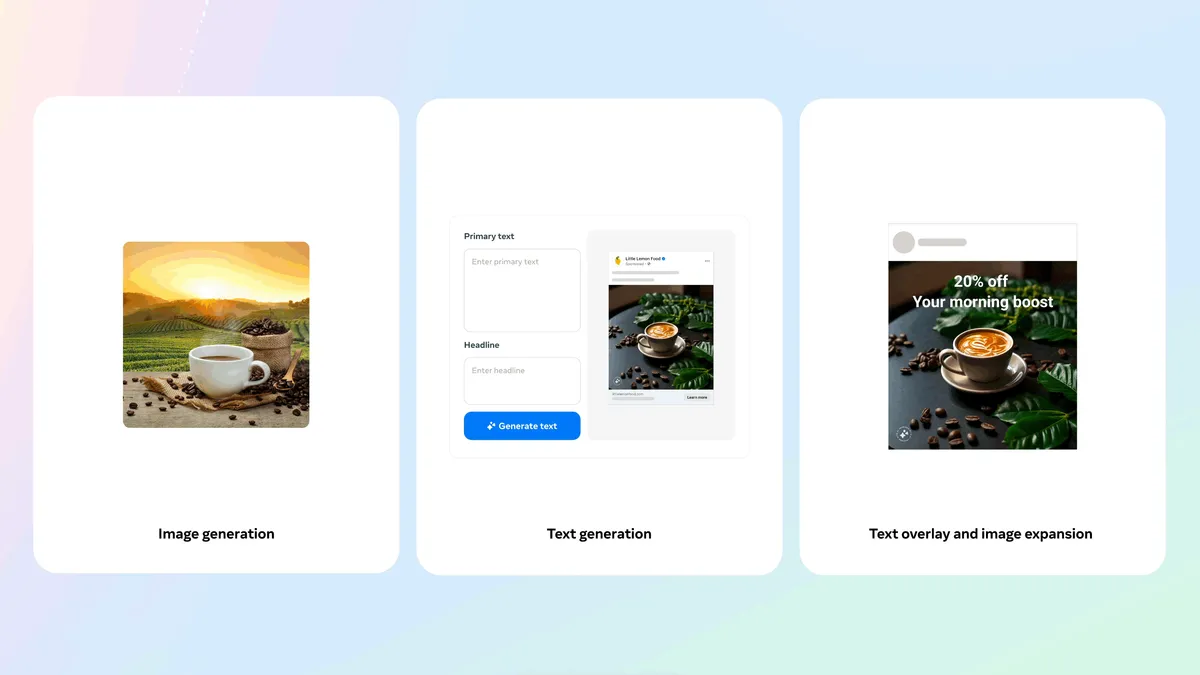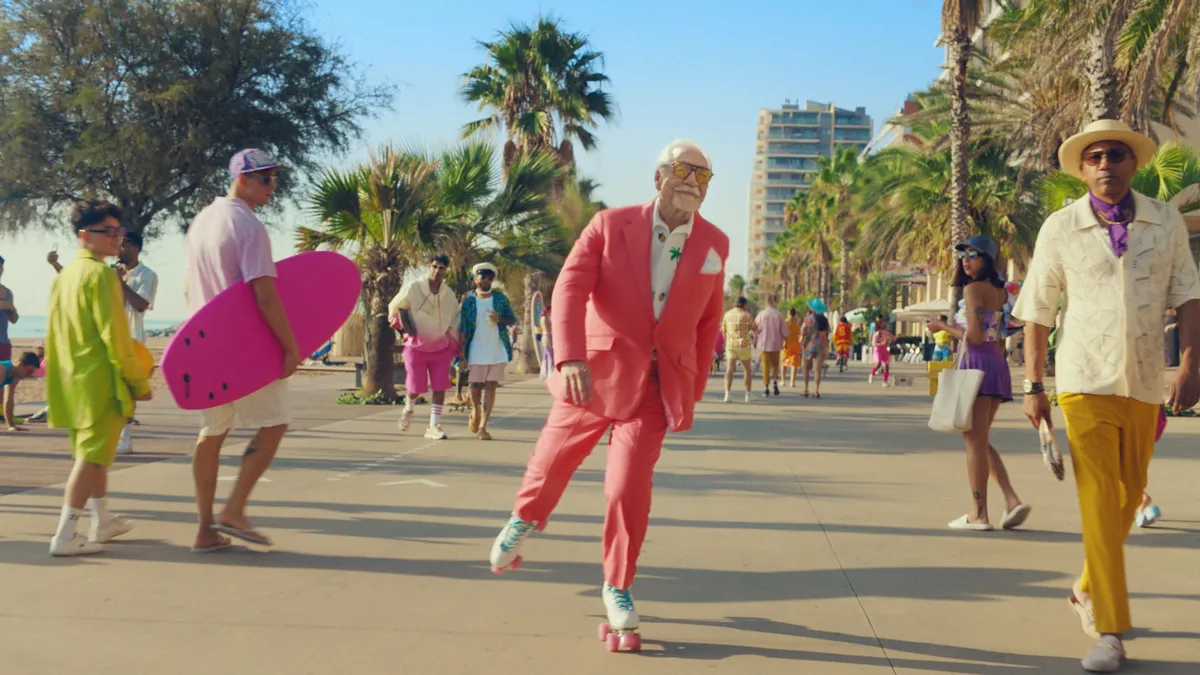NEW YORK — Meta unveiled a set of new generative artificial intelligence (AI) features for advertisers Tuesday (May 7), including image and text generators that speed up creative production. The offerings address a demand among marketers for a greater sense of control in their AI experiments and a guarantee that the end results will meet what are often specific internal brand guidelines, like ensuring the correct colors are present in ads.
Striking the right balance with generative AI is important for Meta to build confidence in a technology the Instagram and WhatsApp owner believes is key to future growth but that has fallen into complex ethical and legal tangles.
“Part of the answer for how to grow [generative AI] adoption is actually making sure it’s not just a black box but you also have the right levels of control,” said John Hegeman, vice president and head of monetization at Meta, during the Q&A portion of a presentation to reporters. “Brand guidelines are an area where brands are going to continue to have a lot of specific preferences and not want those to be violated.”
Meta’s image generator at launch only spits out image variations based on assets that the advertiser submits rather than working off of text prompts alone. A business may have an existing picture that shows a cup of coffee against sunny farmland and could ask Meta to show the cup instead “surrounded by coffee beans and lush leaves,” leading the software to produce several potential image ideas that might serve as a replacement.
“Most marketers and advertisers prefer utilizing the assets that they’ve provided,” said Alvin Bowles, vice president of Meta’s global business group, during the presentation. “The guesswork, you take some of that out of it because it’s actually coming from the agency and client.”
Meta will eventually let the image generator function off of text prompts, according to Hegeman, though there’s no set timeline on when that will occur. The ads can be further spruced up with text overlays in a dozen of Meta’s most popular typeface options, while an automated image expansion tool — already used to adjust ads to fit different Meta surfaces like the TikTok lookalike Reels — will ensure the copy is aligned properly.
Meta at the same time is expanding its AI-powered text generation to ad headlines in addition to primary text. The company said it factored in feedback from advertisers that wanted more diverse suggestions and ones that better reflected their brand values and product selling points. Outputs could be further improved as Meta transitions to its more advanced Llama 3 large-language models.
The social media giant’s new AI bells and whistles are expected to be available globally by the end of the year. As with many pitches around AI, the goal is to get rid of grunt work and open up more time for performance-driving activities, including creative versioning, that boost ad activity and, ultimately, Meta’s bottom line. Meta’s ad revenue was up 27% in Q1 while the average cost per ad increased 6%, a sign of growing demand.
“We want to put time back into people’s hands who are actually focusing on strategic relationships ... as opposed to spending an inordinate amount of time transacting on our platform,” said Bowles.
Striking a balance
Most Meta advertisers have used AI in some shape or form for years, and the firm last year released an AI Sandbox that leverages generative AI to let brands test out different backgrounds and text in their campaigns. Companies like Meta are now trying to gauge where more hands-off automation makes sense in advertising and what areas are best left under human supervision.
Generative AI has been known to produce bizarre, off-putting images — Facebook is rife with uncanny valley material — and is increasingly subject to questions around copyright and the need for disclosure, such as watermarking that signals a picture was AI-generated. Meta executives were asked about both topics several times during the presentation Tuesday. The Meta announcements also dropped the same day that OpenAI, a competitor in the tech arms race, announced a new Media Manager that gives artists a way to opt out of having their works used as training material for generative AI.
Verticals like political and social issues advertisers will not be allowed to use Meta’s generative AI tools at first, per Hegeman. Meta in February outlined its plans to label AI-generated images, though its rules for advertisers are still being ironed out.
“We’re in the process of working through some of the specifics in terms of exactly how that works in the context of ads,” said Hegeman.
Meta will not put preference on AI-generated ads versus those made by humans, nor will it boost its own AI-generated ads over those created with rival software like Midjourney, Hegeman explained. The aim is to prioritize what’s performing best because that drives up the competitiveness of ad auctions. Asked about the cost of accessing these products, Hegeman assured that Meta tries to keep as many of its ad offerings free as possible.
As generative AI becomes more sophisticated, and demands increased computing power, that could change. Meta leadership has previously indicated that charging people to use bigger AI models is one way to monetize the incredibly cost-intensive technology. At least for now, Meta is welcoming advertisers of all sizes into the fold.
“We really want to make sure that businesses of all sizes can option into this,” said Bowles. “This is really meant to democratize storytelling from an advertising lens.”























